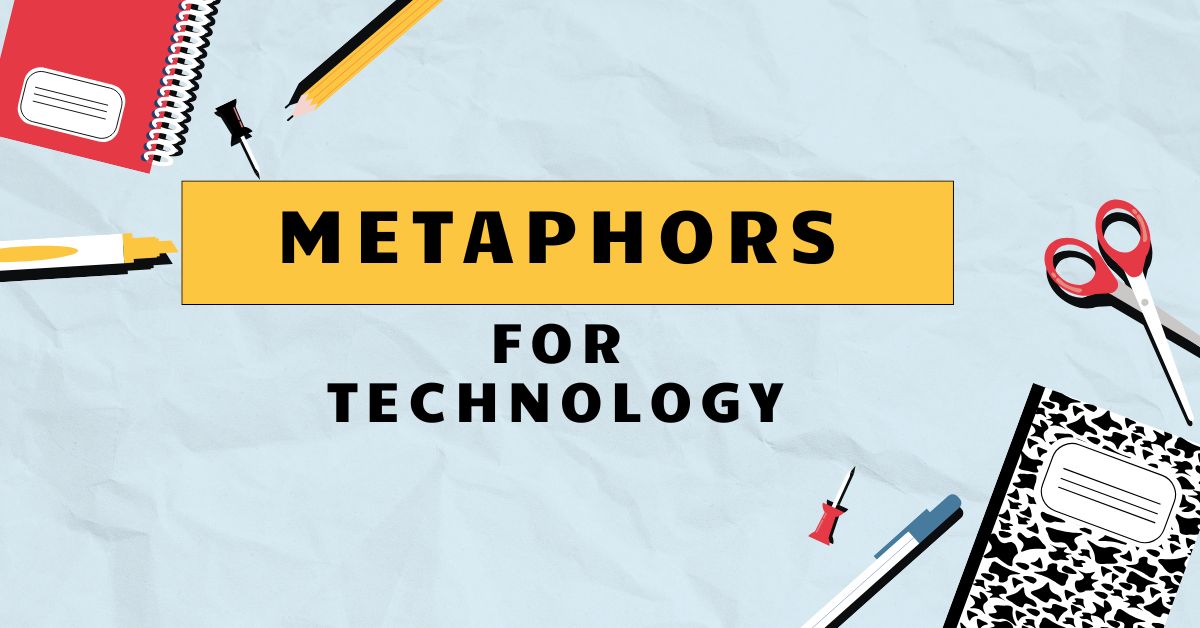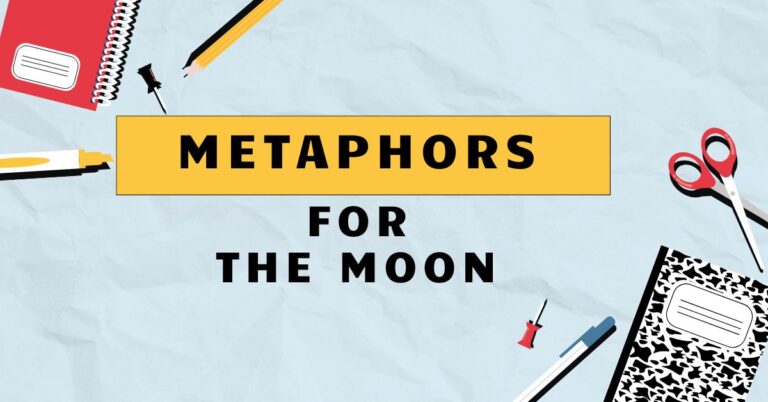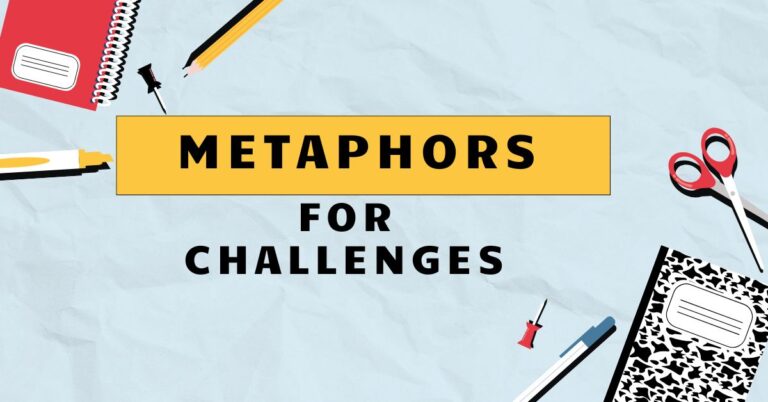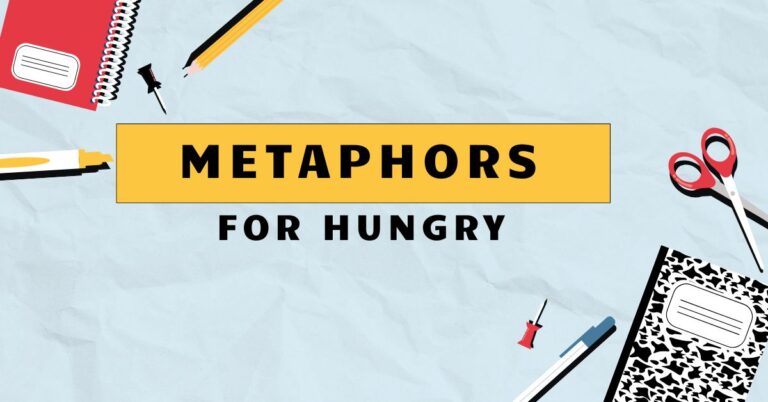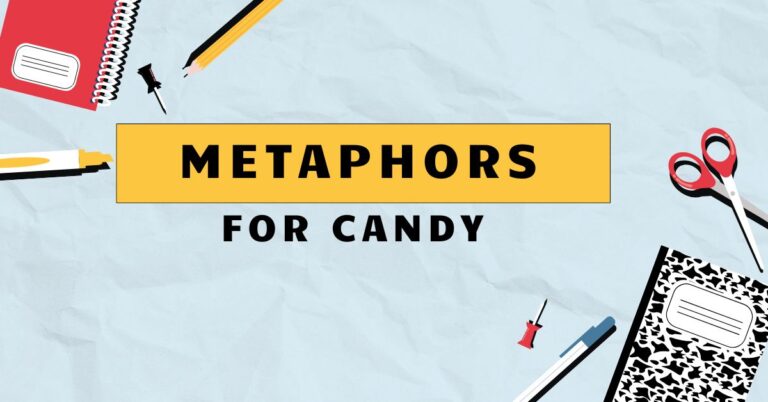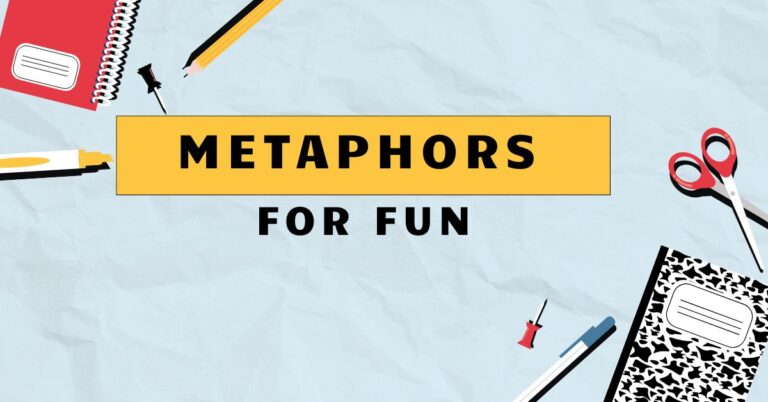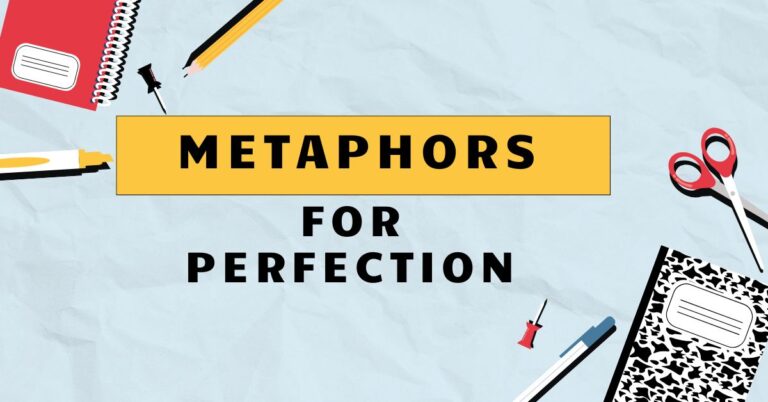43 Technology as Metaphor: Enhancing Language with Tech Imagery
Metaphors are powerful tools that enrich our language and understanding by drawing comparisons between seemingly unrelated things. In modern discourse, technology has become an increasingly prevalent source of metaphorical imagery.
Grasping how technology is used metaphorically not only enhances comprehension but also allows for more nuanced and effective communication. This article provides a comprehensive guide to understanding and using technology-based metaphors, benefiting students, writers, and anyone seeking to improve their command of the English language.
This guide will dissect the usage, structure, and impact of technology metaphors, providing numerous examples and practical exercises to help you master this aspect of figurative language. By exploring how we conceptualize abstract ideas through the lens of technology, you can unlock new levels of expression and understanding.
Table of Contents
- Definition of Technology Metaphors
- Structural Breakdown of Technology Metaphors
- Types and Categories of Technology Metaphors
- Examples of Technology Metaphors
- Usage Rules for Technology Metaphors
- Common Mistakes When Using Technology Metaphors
- Practice Exercises
- Advanced Topics in Technology Metaphors
- Frequently Asked Questions
- Conclusion
Definition of Technology Metaphors
A metaphor is a figure of speech that directly compares two unlike things, suggesting a similarity between them without using “like” or “as.” A technology metaphor, specifically, uses concepts, terms, or imagery associated with technology to describe or explain something else. The function of a technology metaphor is to illuminate complex or abstract ideas by relating them to the familiar and often readily understandable world of technology.
This can make concepts more relatable, vivid, and memorable.
Technology metaphors are classified asconceptual metaphors, which are fundamental to how we think and understand the world. They operate by mapping qualities or characteristics from a source domain (technology) to a target domain (the concept being explained).
For example, describing someone as “hardwired” for success uses the technological term “hardwired” to convey the idea of an innate, unchangeable predisposition. These metaphors are commonly found in business, science, and everyday conversation, reflecting the pervasive influence of technology in modern life.
The context in which a technology metaphor is used significantly impacts its effectiveness. A well-chosen metaphor can clarify a complex idea, while a poorly chosen one can confuse or mislead.
Considerations such as the audience’s familiarity with technology and the appropriateness of the comparison are crucial. For instance, using a highly technical term to explain something to a non-technical audience might not be effective, whereas a simpler, more widely understood analogy would be more suitable.
Structural Breakdown of Technology Metaphors
Understanding the structure of technology metaphors involves recognizing the source and target domains and the mapping between them. Thesource domainis the technological concept or term being used (e.g., “firewall”), while thetarget domainis the concept being described (e.g., a protective barrier).
Themappingis the connection or similarity being drawn between the two.
The basic pattern of a technology metaphor can be represented as: “A is B,” where A is the target domain and B is the source domain (technology). For example, in the metaphor “His mind is a computer,” “mind” is the target domain and “computer” is the source domain.
The mapping involves attributes of a computer, such as processing information, storing data, and executing tasks, being applied to the concept of the mind.
Effective technology metaphors rely on clear and relevant mappings. The chosen technological concept should have qualities that logically and meaningfully relate to the target concept.
The metaphor should also resonate with the audience’s understanding of both technology and the target concept. If the mapping is weak or unclear, the metaphor will fail to illuminate the intended meaning.
Furthermore, the context provides crucial clues. For instance, the phrase “plugged in” might mean actively engaged when describing a person, drawing on the technological association of being connected to a power source.
The structural breakdown helps to reveal the relationship by isolating the technological component and clarifying the intended parallels.
Types and Categories of Technology Metaphors
Technology metaphors can be categorized based on the specific area of technology they draw from. Here are several common categories:
Computing Metaphors
These metaphors use concepts from computer science and information technology. Examples include “His brain is a processing unit,” “She’s wired differently,” and “We need to reboot the system.” Computing metaphors often relate to speed, efficiency, and data processing.
Internet Metaphors
These metaphors draw from the internet and digital communication. Examples include “going viral,” “trolling,” “being connected,” and “downloading information.” These metaphors are especially common in discussions of social trends and information dissemination.
Mechanical Metaphors
These metaphors use terms from mechanics and engineering. Examples include “gearing up,” “losing steam,” “well-oiled machine,” and “fine-tuning.” Mechanical metaphors often relate to efficiency, precision, and reliability.
Electrical Metaphors
These metaphors use terms related to electricity and electronics. Examples include “short-circuiting,” “sparking an idea,” “high voltage,” and “blown fuse.” Electrical metaphors often relate to energy, intensity, and sudden changes.
Telecommunications Metaphors
These metaphors use terms from telephones and communication networks. Examples include “getting the signal,” “crossing wires,” “on the same wavelength,” and “lost connection.” Telecommunications metaphors often relate to communication, understanding, and relationships.
Examples of Technology Metaphors
The following tables provide a variety of examples of technology metaphors, categorized by type. Each example illustrates how a technological concept is used to describe something else, enhancing understanding through comparison.
Table 1: Computing Metaphors
The following table provides examples of computing metaphors, illustrating how computer-related concepts are used to describe other phenomena.
| Metaphor | Explanation |
|---|---|
| His mind is a powerful computer. | Compares the mind to a computer with high processing capabilities. |
| She’s hardwired for success. | Implies that she is naturally predisposed to succeed. |
| We need to reboot the system. | Suggests a need to restart or refresh a process or organization. |
| He’s running on low battery. | Indicates that he is tired or lacking energy. |
| That idea didn’t compute. | Means the idea didn’t make sense or wasn’t understood. |
| Her memory is like a RAM. | Suggests a short-term and quickly accessible memory. |
| He needs to defrag his thoughts. | Implies a need to organize and clarify his thinking. |
| She’s a human algorithm. | Describes someone who is highly logical and efficient in solving problems. |
| He’s stuck in a loop. | Indicates that he is repeating the same behavior or thought pattern. |
| The project is bug-ridden. | Means the project is full of errors or problems. |
| She’s a data mine of information. | Suggests she possesses a wealth of knowledge. |
| They had to debug the process. | Implies they had to fix the errors in the process. |
| His brain is overclocked. | Indicates he is thinking intensely or working very hard mentally. |
| Her emotions were buffering. | Suggests she was struggling to process her emotions. |
| He is operating on autopilot. | Indicates he is doing something without conscious thought. |
| The plan needs a patch. | Suggests the plan needs a small fix or adjustment. |
| He’s a skilled programmer of words. | Describes someone who is adept at using language effectively. |
| She’s running in the background. | Implies she is working on something discreetly or subtly. |
| His arguments were full of glitches. | Means his arguments contained errors or inconsistencies. |
| The system crashed under pressure. | Indicates a failure due to stress or overload. |
| The software of his mind. | Refers to the learned behaviors and processes in his thinking. |
| He’s a walking, talking search engine. | Describes someone who can quickly provide information on various topics. |
| She’s got firewall around her heart. | Suggests she is protecting herself emotionally. |
| His creativity is like cloud storage. | Implies his creativity is vast and easily accessible. |
Table 2: Internet Metaphors
The following table provides examples of internet metaphors, illustrating how internet-related concepts are used to describe other phenomena.
| Metaphor | Explanation |
|---|---|
| The news went viral. | Means the news spread rapidly and widely online. |
| Don’t feed the trolls. | Advises against engaging with provocative online commenters. |
| She’s always connected. | Indicates that she is constantly online and accessible. |
| I’m downloading information. | Means I am absorbing or learning new information. |
| He’s lost in the internet rabbit hole. | Suggests he is deeply engrossed in online content. |
| Her ideas are trending. | Implies her ideas are becoming popular or widely discussed. |
| He’s been hacked emotionally. | Indicates he has been emotionally manipulated. |
| She’s a social media influencer. | Describes someone who has a significant impact on social media. |
| He’s living in an echo chamber. | Suggests he is only hearing opinions that reinforce his own. |
| The rumor spread like wildfire online. | Means the rumor spread rapidly and uncontrollably. |
| She’s curating her online presence. | Implies she is carefully managing her online image. |
| He’s a digital nomad. | Describes someone who works remotely and travels frequently. |
| Her speech was a hyperlink to other ideas. | Suggests her speech contained many connections to other topics. |
| He’s been ghosted. | Indicates he has been suddenly cut off from communication. |
| She’s a meme queen. | Describes someone who is known for creating or popularizing memes. |
| The project is crowdsourced. | Suggests the project is built on contributions from many people online. |
| He’s a lurker in the forums. | Implies he observes online discussions without actively participating. |
| She’s a digital native. | Indicates she grew up with technology and is comfortable using it. |
| His arguments were full of clickbait. | Means his arguments were designed to attract attention deceptively. |
| The information is behind a paywall. | Indicates the information is only accessible with payment. |
| He’s living in the metaverse. | Suggests he is heavily involved in virtual reality and digital worlds. |
| He’s constantly multitasking tabs in life. | Describes someone handling many responsibilities simultaneously. |
| She filters her real life through Instagram. | Implies she presents an idealized version of her life online. |
| His life is heavily tagged and shared. | Suggests his life is very public and documented online. |
Table 3: Mechanical Metaphors
The following table provides examples of mechanical metaphors, illustrating how mechanical and engineering concepts are used to describe other phenomena.
| Metaphor | Explanation |
|---|---|
| We need to gear up for the challenge. | Means we need to prepare and increase our efforts. |
| He’s running out of steam. | Indicates that he is losing energy or motivation. |
| The team is a well-oiled machine. | Describes a team that works efficiently and smoothly. |
| We need to fine-tune the plan. | Suggests a need to make small adjustments to improve the plan. |
| She’s a cog in the machine. | Implies she is a small but necessary part of a larger system. |
| His ideas are like clockwork. | Suggests his ideas are precise and predictable. |
| He’s a human dynamo. | Describes someone who is energetic and productive. |
| The project is gaining momentum. | Indicates that the project is progressing rapidly. |
| She’s firing on all cylinders. | Implies she is performing at her best. |
| He’s a broken record. | Suggests he is repeating the same thing over and over. |
| The relationship is running on fumes. | Indicates the relationship is barely surviving. |
| She puts a wrench in the works. | Implies she disrupts or sabotages a process. |
| His arguments were full of holes. | Means his arguments were weak and easily refuted. |
| He’s stuck in neutral. | Indicates he is not making progress. |
| She’s a loose cannon. | Describes someone who is unpredictable and potentially dangerous. |
| The plan needs a jump start. | Suggests the plan needs an initial boost to get it going. |
| He’s a human engine. | Implies he is constantly working and generating results. |
| She’s a pressure cooker. | Indicates she is under a lot of stress. |
| His emotions were wound tight. | Means his emotions were tense and restrained. |
| The situation is at a boiling point. | Indicates the situation is about to explode. |
| He’s a human spring, full of energy. | Describes someone who is energetic and enthusiastic. |
| He is stuck in the grind of daily life. | Suggests his life is repetitive and monotonous. |
| She is a well-oiled talking machine. | Implies she is a very articulate and persuasive speaker. |
| His career is idling. | Suggests his career is not progressing. |
Table 4: Electrical Metaphors
The following table provides examples of electrical metaphors, illustrating how electrical concepts are used to describe other phenomena.
| Metaphor | Explanation |
|---|---|
| The idea sparked an interest. | Means the idea created a sudden and strong interest. |
| He’s short-circuiting under pressure. | Indicates that he is becoming confused or irrational due to stress. |
| She’s a high-voltage personality. | Describes someone who is energetic and intense. |
| He’s blown a fuse. | Suggests he has lost his temper or become overwhelmed. |
| There’s a lot of static in their relationship. | Implies there is tension or conflict in their relationship. |
| She’s a live wire. | Describes someone who is energetic and unpredictable. |
| His emotions were amplified. | Means his emotions were intensified. |
| The news was electrifying. | Indicates the news was exciting and stimulating. |
| He’s a human conductor of energy. | Describes someone who facilitates the flow of energy or ideas. |
| She’s a power surge of creativity. | Implies she has a sudden burst of creative energy. |
| The atmosphere was charged with excitement. | Indicates the atmosphere was full of anticipation and energy. |
| He’s unplugged from reality. | Suggests he is detached from the real world. |
| Her ideas were illuminating. | Means her ideas were enlightening and clarifying. |
| He’s a human battery. | Implies he is a source of energy and motivation. |
| She’s a beacon of hope. | Describes someone who provides guidance and inspiration. |
| His charisma is magnetic. | Suggests his personality is attractive and captivating. |
| He’s a human generator of ideas. | Implies he is constantly producing new ideas. |
| She’s a powerhouse of productivity. | Indicates she is highly efficient and productive. |
| His words were like a jolt of electricity. | Means his words were shocking and impactful. |
| The situation is highly charged. | Indicates the situation is tense and emotional. |
| He’s grounded in reality. | Suggests he is practical and realistic. |
| He is energized by the challenge. | Implies he feels motivated by the challenge. |
| She is a radiant personality. | Implies she has a bright and cheerful disposition. |
| The room buzzed with excitement. | Suggests the room was filled with lively energy. |
Table 5: Telecommunications Metaphors
The following table provides examples of telecommunications metaphors, illustrating how telecommunications concepts are used to describe other phenomena.
| Metaphor | Explanation |
|---|---|
| I’m not getting the signal. | Means I don’t understand or comprehend. |
| Our wires are crossed. | Indicates that we have a misunderstanding. |
| We’re on the same wavelength. | Suggests that we understand each other well. |
| I’ve lost connection with him. | Means I’ve lost contact or rapport with him. |
| She’s sending mixed signals. | Implies she is communicating conflicting messages. |
| He’s always on the line. | Indicates that he is always available or busy. |
| The message didn’t get through. | Means the message was not received or understood. |
| She’s broadcasting her feelings. | Implies she is openly expressing her feelings. |
| He’s a human transmitter of information. | Describes someone who readily shares information. |
| There’s a lot of interference in our communication. | Indicates there are obstacles to clear communication. |
| She’s a human receiver of empathy. | Implies she is highly receptive to the emotions of others. |
| The conversation was disconnected. | Means the conversation lacked coherence or connection. |
| He’s a human networker. | Describes someone who is skilled at building connections. |
| She’s a human switchboard. | Implies she is a central point for communication. |
| The message was crystal clear. | Means the message was easily understood. |
| His words resonated with me. | Suggests his words had a deep and meaningful impact. |
| He’s a human repeater of rumors. | Implies he spreads rumors without verifying them. |
| She’s a human translator of ideas. | Indicates she is skilled at explaining complex concepts. |
| His arguments were full of static. | Means his arguments were unclear and confusing. |
| The signal is weak. | Indicates the communication is not clear or effective. |
| He’s a human antenna, picking up on everything. | Describes someone who is highly perceptive and aware. |
| He is tuning into the conversation. | Implies he is starting to pay attention to the conversation. |
| She is speaking in code. | Implies she is communicating indirectly or secretively. |
| His life is a constant stream of communication. | Suggests his life is filled with constant interaction and information. |
Usage Rules for Technology Metaphors
Using technology metaphors effectively requires adherence to certain rules and guidelines. First,ensure relevance.
The technological concept should have a clear and logical connection to the target concept. A weak or forced analogy will confuse rather than clarify.
Second,know your audience. Consider their familiarity with technology.
Using obscure or highly technical terms with a non-technical audience will likely be ineffective. Opt for simpler, more widely understood analogies.
Third,avoid clichés. Overused metaphors lose their impact and can make your writing sound unoriginal.
Strive for fresh and creative comparisons.
Fourth,maintain consistency. Avoid mixing metaphors or switching between different technological domains within the same context.
This can create confusion and undermine your message.
Fifth,consider the connotations. Technological terms often carry specific connotations (e.g., efficiency, coldness, complexity).
Be mindful of these connotations and ensure they align with your intended meaning.
Exceptions and special casesexist. In some contexts, a more abstract or unconventional metaphor may be appropriate, particularly in creative writing or artistic expression.
However, in most cases, clarity and relevance should be prioritized.
Common Mistakes When Using Technology Metaphors
Several common mistakes can undermine the effectiveness of technology metaphors. One frequent error is usinginaccurate or outdated technological references.
For example, referring to “dial-up speed” in a context where everyone uses high-speed internet might seem anachronistic and confusing.
Another mistake is creating mixed metaphors. For instance, “He’s running on fumes while simultaneously downloading information” combines a mechanical metaphor with a computing metaphor, creating a disjointed and confusing image.
Overusing technology metaphors is also a common pitfall. While they can be effective, relying too heavily on them can make your writing sound repetitive and contrived.
The following table provides examples of common mistakes and corrections:
| Incorrect | Correct | Explanation |
|---|---|---|
| Her brain is a floppy disk. | Her brain is a high-speed processor. | “Floppy disk” is outdated and doesn’t convey speed or efficiency. |
| He’s a well-oiled machine downloading information. | He’s a well-oiled machine. OR He’s efficiently processing information. | Mixing mechanical and computing metaphors creates confusion. |
| The project is bug-ridden, a train wreck, and a dumpster fire. | The project is bug-ridden. OR The project is a disaster. | Using too many metaphors dilutes their impact. |
| He’s hardwired for success, but his battery is low. | He’s hardwired for success, but he’s currently lacking energy. | The battery metaphor clashes with the hardwired metaphor. |
| She’s a digital native, but she’s losing steam. | She’s a digital native, but she’s becoming less enthusiastic. | The losing steam metaphor clashes with the digital native metaphor. |
| His ideas are like a telegraph in the age of the internet. | His ideas are outdated in the modern context. | The telegraph reference is outdated and doesn’t resonate well. |
| He’s rebooting, but also needs to fine-tune his approach. | He’s restarting, but also needs to adjust his approach. | The mix of rebooting and fine-tuning creates a disjointed image. |
| She is plugged in, but also running on fumes. | She is actively engaged, but also running low on energy. | The plugged in and running on fumes metaphors clash. |
Practice Exercises
The following exercises will help you practice identifying and using technology metaphors effectively.
Exercise 1: Identifying Technology Metaphors
Identify the technology metaphor in each sentence and explain its meaning.
| Question | Answer |
|---|---|
| 1. Her arguments were full of glitches. | Metaphor: Glitches. Meaning: Her arguments contained errors or inconsistencies. |
| 2. He’s a human search engine. | Metaphor: Search engine. Meaning: He can quickly provide information on various topics. |
| 3. The project is gaining momentum. | Metaphor: Gaining momentum. Meaning: The project is progressing rapidly. |
| 4. She’s a live wire. | Metaphor: Live wire. Meaning: She is energetic and unpredictable. |
| 5. We’re on the same wavelength. | Metaphor: Same wavelength. Meaning: We understand each other well. |
| 6. His career is idling. | Metaphor: Idling. Meaning: His career is not progressing. |
| 7. The news went viral. | Metaphor: Viral. Meaning: The news spread rapidly and widely online. |
| 8. He blew a fuse. | Metaphor: Blew a fuse. Meaning: He lost his temper or became overwhelmed. |
| 9. She’s hardwired for success. | Metaphor: Hardwired. Meaning: She is naturally predisposed to succeed. |
| 10. The team is a well-oiled machine. | Metaphor: Well-oiled machine. Meaning: The team works efficiently and smoothly. |
Exercise 2: Using Technology Metaphors
Complete each sentence using an appropriate technology metaphor.
| Question | Answer |
|---|---|
| 1. He’s so tired; he’s ______. | He’s so tired; he’s running on low battery. |
| 2. The situation is tense; it’s ______. | The situation is tense; it’s highly charged. |
| 3. She’s very organized; she’s like a ______. | She’s very organized; she’s like a human algorithm. |
| 4. The rumor spread quickly; it ______. | The rumor spread quickly; it went viral. |
| 5. We need to prepare; we need to ______. | We need to prepare; we need to gear up. |
| 6. I don’t understand; I’m not ______. | I don’t understand; I’m not getting the signal. |
| 7. He’s repeating himself; he’s a ______. | He’s repeating himself; he’s a broken record. |
| 8. The idea sparked ______. | The idea sparked an interest. |
| 9. They don’t agree; their ______. | They don’t agree; their wires are crossed. |
| 10. His emotions were ______. | His emotions were amplified. |
Exercise 3: Correcting Incorrect Technology Metaphors
Identify and correct the incorrect or ineffective technology metaphors in the following sentences.
| Question | Answer |
|---|---|
| 1. Her brain is a phonograph. | Corrected: Her brain is a high-speed processor. |
| 2. He’s a steam engine downloading information. | Corrected: He’s a human dynamo. OR He’s efficiently processing information. |
| 3. The project is a train wreck, a glitch, and a short circuit. | Corrected: The project is a disaster. OR The project is bug-ridden. |
| 4. She’s hardwired for success, but she needs to recharge her tires. | Corrected: She’s hardwired for success, but she needs to recharge her batteries. |
| 5. He’s a digital native, but he’s out of gas. | Corrected: He’s a digital native, but he’s losing enthusiasm. |
| 6. His ideas are like Morse code in the age of the internet. | Corrected: His ideas are outdated in the modern context. |
| 7. She’s rebooting, but also needs to oil the gears. | Corrected: She’s restarting, but also needs to adjust her approach. |
| 8. He is plugged in, but also running out of coal. | Corrected: He is actively engaged, but also running low on energy. |
| 9. She is broadcasting, but also needs to sharpen her saw. | Corrected: She is openly expressing her feelings, but also needs to refine her message. |
| 10. He is curating his online presence, but also losing altitude. | Corrected: He is carefully managing his online image, but also facing challenges. |
Advanced Topics in Technology Metaphors
For advanced learners, exploring the cultural and historical contexts of technology metaphors can provide deeper insights. The prevalence and specific types of technology metaphors often reflect the dominant technologies and cultural values of a particular era.
For example, early 20th-century metaphors often drew from industrial machinery, while modern metaphors are more likely to reference digital technology.
Analyzing the rhetorical impact of technology metaphors can also be a valuable exercise. Consider how different metaphors can evoke specific emotions or attitudes.
Some metaphors might emphasize efficiency and progress, while others might highlight the potential for dehumanization or control.
Additionally, exploring the use of technology metaphors in literature and film can reveal how these metaphors contribute to narrative development and characterization. Authors and filmmakers often use technology metaphors to create symbolic meanings and explore complex themes related to technology and society.
Frequently Asked Questions
What is the difference between a metaphor and a simile?
A metaphor directly equates two unlike things (e.g., “His mind is a computer”), while a simile uses “like” or “as” to make a comparison (e.g., “His mind is like a computer”).
How can I avoid using clichés when using technology metaphors?
Strive for originality by thinking of fresh and unexpected comparisons. Consider the specific qualities you want to emphasize and brainstorm technological concepts that align with those qualities.
Are technology metaphors only applicable to technical contexts?
No, technology metaphors can be used in a wide range of contexts, including business, education, and everyday conversation. The key is to ensure the metaphor is relevant and understandable to your audience.
Can I use technology metaphors in creative writing?
Yes, technology metaphors can be a powerful tool in creative writing to create vivid imagery, explore complex themes, and add depth to your characters and narratives.
How do I choose the right technology metaphor for my audience?
Consider your audience’s familiarity with technology and their level of technical expertise. Opt for simpler, more widely understood analogies for non-technical audiences and more sophisticated metaphors for technical audiences.
Conclusion
Technology metaphors are a powerful and versatile tool for enhancing language and understanding. By drawing comparisons between technology and other concepts, we can clarify complex ideas, evoke vivid imagery, and add depth to our communication.
Mastering the art of using technology metaphors involves understanding their structure, adhering to usage rules, avoiding common mistakes, and practicing their application in various contexts. Whether you are a student, writer, or simply someone seeking to improve your command of the English language, a solid grasp of technology metaphors will undoubtedly enrich your expressive capabilities and analytical skills.
Embrace the power of technology metaphors to unlock new dimensions of language and thought.

